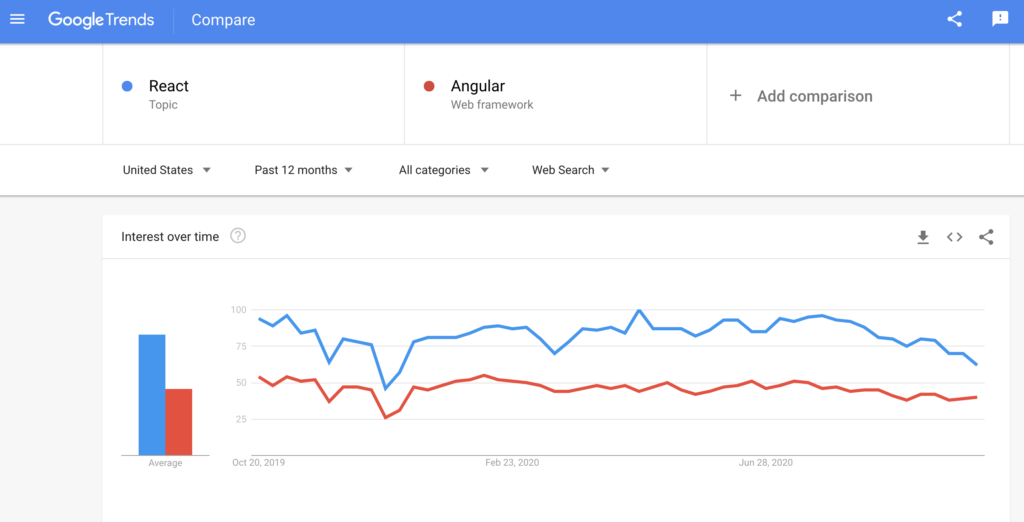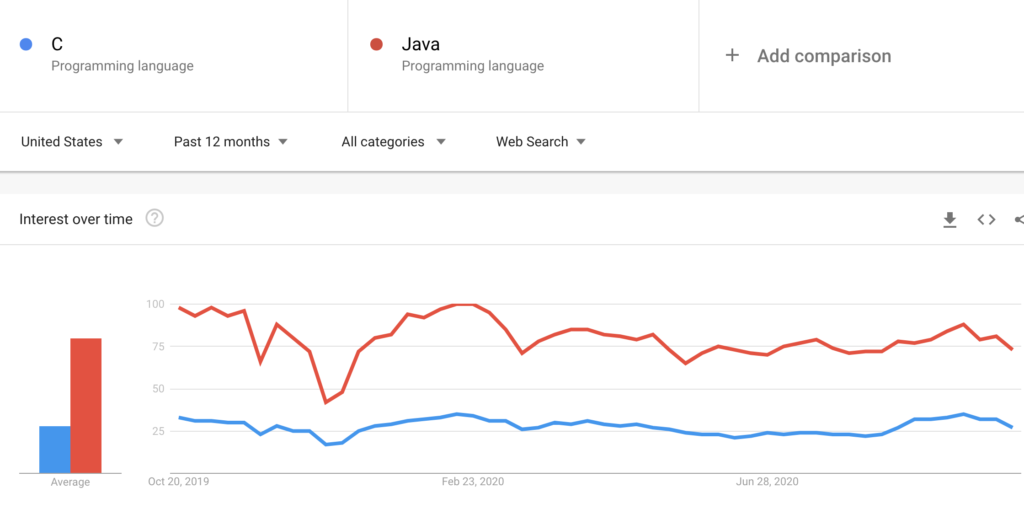Is React more popular? Is Angular more popular? Short answer: React is more popular. Proof?

Google Trends. The question is: why is React more popular and Is it going to remain popular in the future?
I have more than 15 years of hand-on experience and I know one thing and one thing only: It is not enough to see current trends to be able to thrive in the market. It is equally important to be able to predict future trends because if you can’t do that, the trends are bound to change and everything can start falling on your head. So, let us begin our analysis of why is React more popular.
Quick and easy answer: performance and resistance.
It is not a secret that React outperforms Angular. Now, take React and put it on top Typescript and you will start facing some performance issues. Obviously, React you can start to add components incrementally and it offers you flexibility and speed of what you want to add and what you don’t want to add. Great, isn’t it? Well, is that it? Is this is why React dominating. No. Remember, Typescript which Angular is based on, is so heavily standardised and stylised and it makes front-end lose its fuzziness. Believe it or not, there is certain magic to this fuzziness that the front-enders tend to like. It seams so close to the art experience they have from UX designs to code. It is a part of their magic and a part of this unpredictability that make front-end more of an art than a science.
In the words of Brendan Eich, the inventor of Javascript:-
“If I had done classes in JavaScript back in May 1995, I would have been told that it was too much like Java or that JavaScript was competing with Java … I was under marketing orders to make it look like Java but not make it too big for its britches … [it] needed to be a silly little brother language.”

The above is a bug in Javascript that no one have had to the time to resolve. Indeed, the fuzziness of Javascript has been a part of the fuzzy culture that the front-enders identified with as a part of its magic and it gave them a lot of thrill when they were implementing the UX designs and it is one of the primary reasons why the back-enders didn’t dare step in their unfamiliar territories.
Now, think about the resistance that Typescript and Angular are facing and it is striving for standardisation. What in fact was thought of the right thing to do defied the front-enders pop culture.
Now, where is this leading us? Obviously, Angular has encouraged a lot of the back-enders to come into the front-end world which was a choice not cherished by the front-enders and this made them endorse more React. That in addition of the business having a little reason to stick to Angular given the performance difference. What is Typescript offering can be rivalled by tools like JSDocs which is less expensive in terms of performance. But, Angular did not die. Because standardisation will win. It always has done.
All, I am saying is: imagine that Google has managed to support Typescript in Google’s browser? I hope now you can see the impact. It is going to be huge. People, will no longer hold onto React, why should they? The business would have less choice to stick to React given that Google Chrome, the most popular web browser, supports Typescript.
Which programming language performs better: C or Java? The answer is C. Which programming language is more popular: C of Java? The answer is below:-

And the question is why? Short answer: Standardisation. Standardisation will always win. It always has. Using a number as a boolean and leading to unpredictable outcomes and can be cool and thrilling. But, at the end of the day we all know that a pointer is a pointer, boolean is a boolean and number is a number and we need more time to deliver business value over wasting our times solving interesting programmatic mind-turns.
I hope you find this article useful. I would love to hear your thoughts.
